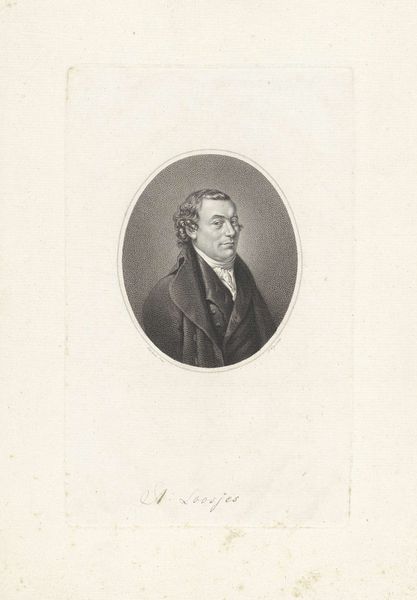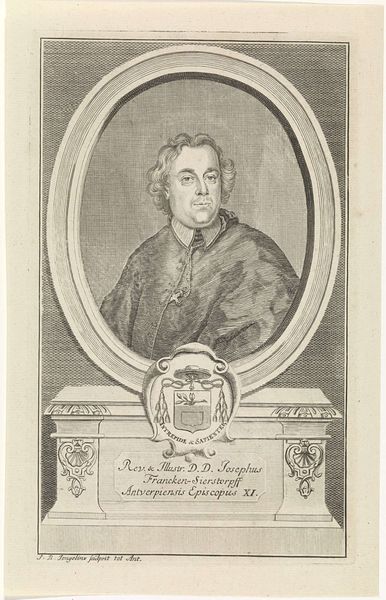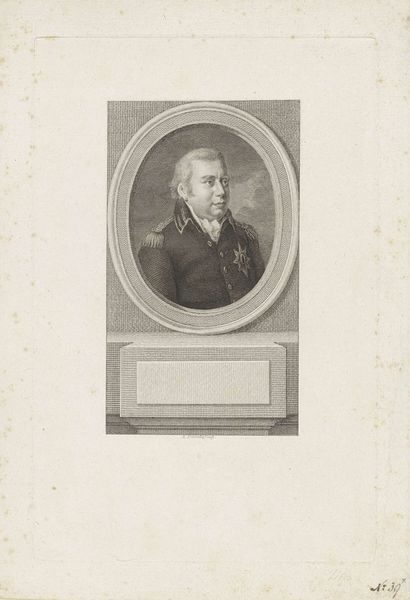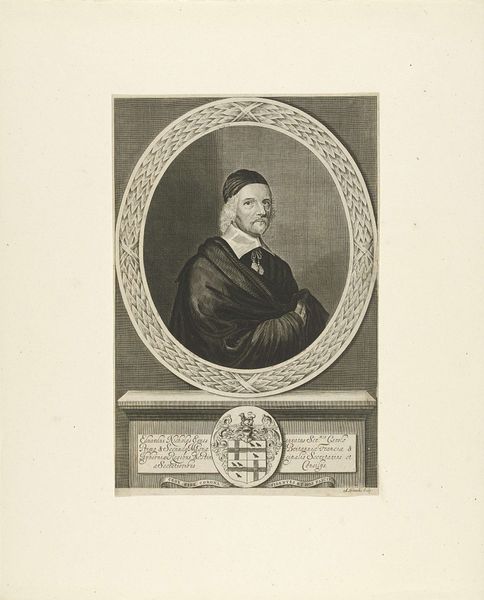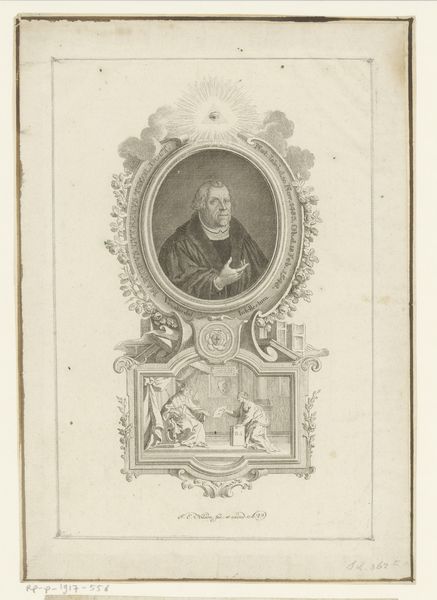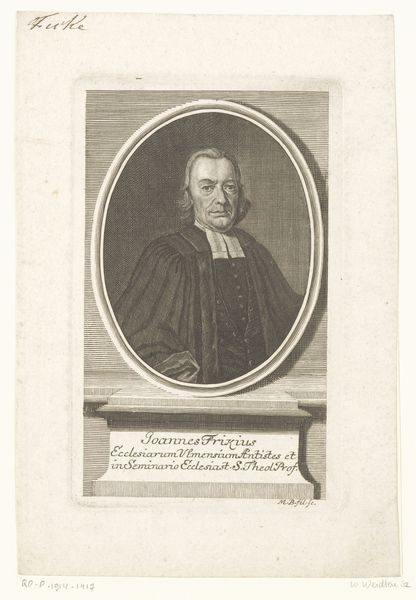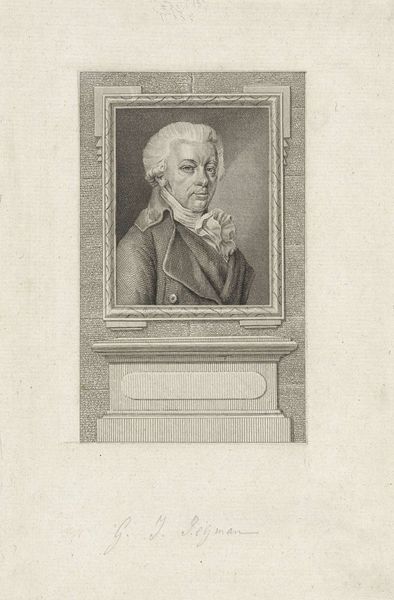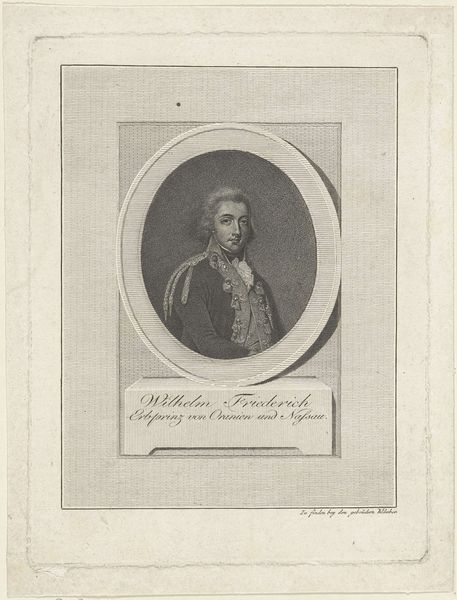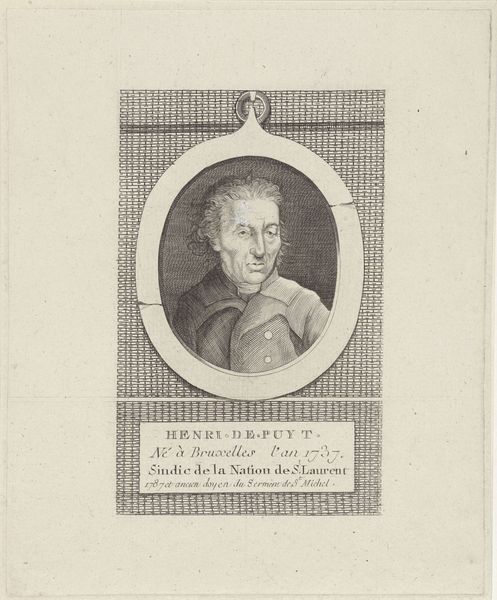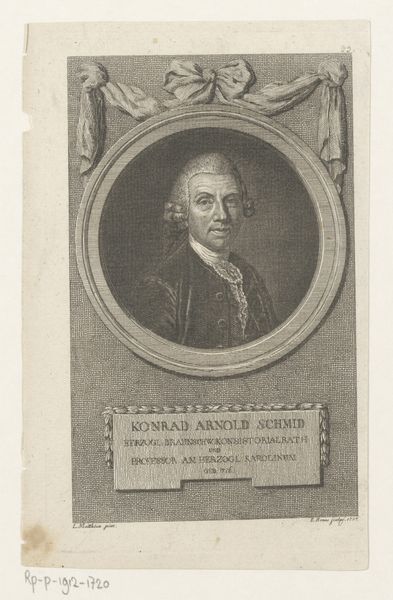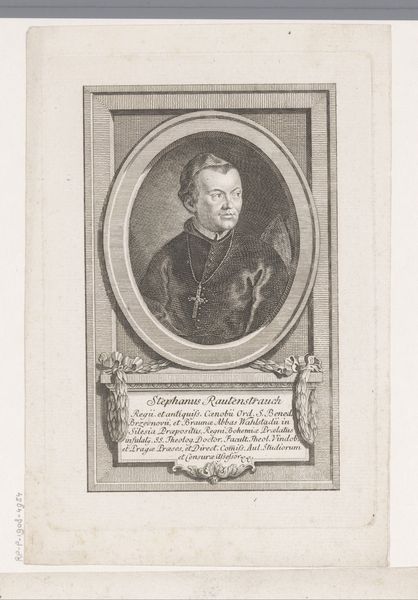
engraving
#
portrait
#
baroque
#
history-painting
#
academic-art
#
engraving
Dimensions: height 150 mm, width 125 mm
Copyright: Rijks Museum: Open Domain
Curator: Welcome. We're looking at Bernard Picart's "Portret van paus Benedictus XIV", an engraving from between 1683 and 1733, held at the Rijksmuseum. Editor: My first thought is the sheer density of detail. The frame around the portrait feels as significant as the figure within. It’s incredibly ornate! Curator: Precisely. Note the artist’s masterful handling of line and texture, even within such a confined tonal range. The contrast between the crispness of Benedictus's face and the swirling baroque elements of the frame is key. The oval form tightly contains the subject's image and redirects your sight. Editor: That baroque frame seems to communicate as much about power and status as the Pope himself. Those ribbons and garlands, plus the coat-of-arms, aren't mere decoration, they speak to Benedictus’s position within the religious hierarchy. What do you make of his gaze? Curator: His gaze is rather direct, even benign. While the engraving, due to the time of its creation, flattens depth, that direct engagement is present and invites the viewer to assess their own interpretation of him. The modeling of light across the face and the clothing adds to the reading. It uses those textures and shapes in ways that attempt three-dimensionality. Editor: Beyond his face, my attention is drawn to the garments. That embroidered stole is opulent! Symbolically, the layers of vestments convey not only rank but spiritual authority and succession. The cap upon his head denotes that he is part of an elite community that transcends time. It also tells a history. Curator: Good observation. And look, again, at how Picart handles light, reflecting it off the satins and silks, drawing out form and mass in the fabrics while setting that off against the sharper engraving techniques elsewhere in the image. Editor: For me, this image serves as a lens through which we see not just a man, but the papacy itself, made accessible. Its display signals cultural continuity—a deliberate crafting of an enduring image. Curator: It serves both as a well constructed portrait, that focuses on tonal range and material but the frame serves the purpose of guiding the interpretation for an era that would engage with it as an instructional and historical artifact. Editor: So, while dissecting the composition enriches the experience, engaging with what these visual markers have signified reveals the real depth of the work.
Comments
No comments
Be the first to comment and join the conversation on the ultimate creative platform.
